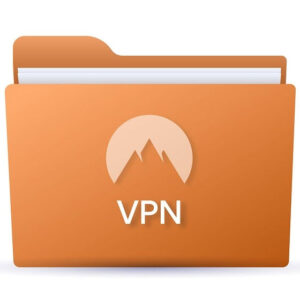
Whaling (phishing) has become one of the most dangerous and sophisticated online threats today, targeting high-profile individuals and companies. Unlike traditional phishing attacks, which typically focus on a broad audience, whaling is a more targeted and personalized form of cyber crime. In this article, we’ll delve into the nature of whaling, its impact on individuals and organizations, and provide practical tips on how to protect yourself from becoming a victim of this dangerous form of cyberattack.
What is Whaling (Phishing)?
Whaling is a specific type of phishing attack that targets high-ranking individuals within a company, such as CEOs, and other senior executives. While phishing generally involves fraudulent attempts to steal sensitive information by pretending to be a trustworthy entity, whaling goes further by tailoring the attacks to appear as legitimate communications that the recipient would expect to receive, often with the aim of stealing large sums of money or confidential data.
Whaling attacks often involve emails that are designed to appear as official communication from trusted sources such as banks, government agencies, or even colleagues within the organization. These emails will typically request sensitive actions, like wiring money or divulging login credentials, often disguised as urgent requests. Since the targets of these attacks are typically higher-ranking individuals with access to company resources, the stakes are much higher for a successful whaling attack.
How Whaling Works
The process of a whaling attack typically follows several stages:
- Reconnaissance: The attacker will spend time researching the target. This can involve examining publicly available information about the company and the specific executive or high-ranking individual. Social media platforms, company websites, and news articles are often used to gather information on a target’s daily activities, relationships, and responsibilities.
- Crafting the Email: After gathering sufficient information, the attacker creates a highly personalized email that will appear convincing to the target. This email may seem to come from a trusted colleague, partner, or business contact, with a request that seems urgent or critical.
- Action Request: The email often includes a sense of urgency, such as needing immediate action on a financial transaction or accessing confidential information. It might include fake invoices, shipping information, or requests for wire transfers, all designed to appear as if they are legitimate business matters.
- Exfiltrating Information: Once the target follows the instructions in the email, the attacker can gain access to sensitive data, financial accounts, or business systems. In some cases, this may result in large sums of money being transferred out of the company, or private customer information being exposed.
- Financial or Data Theft: The ultimate goal of a whaling attack is to steal valuable data or financial resources from the victim. Depending on the nature of the attack, this could involve stealing money, intellectual property, customer databases, or confidential business documents.
Examples of Whaling Attacks
A notable example involved the famous “CEO Fraud” scam, which targets employees within an organization who handle financial transactions. In this case, an attacker would impersonate the CEO or another executive, sending an email to the finance department requesting an urgent transfer of funds. These emails typically play on the employee’s trust in the executive, urging them to complete the transaction quickly due to time constraints or supposed emergencies.
The Risks of Whaling Attacks
Whaling attacks can have devastating consequences for both individuals and organizations. The risks associated with these types of attacks include:
- Financial Loss: The most immediate risk is the potential for large-scale financial losses . Cyber criminals often request wire transfers to offshore accounts, making recovery of the stolen funds extremely difficult.
- Data Breach: Whaling attacks can also result in the theft of sensitive personal or business information, including customer data, intellectual property, and trade secrets. This can lead to regulatory fines, loss of customer trust, and significant reputational damage.
- Loss of Company Reputation: When a company is targeted by a whaling attack, it can severely damage its reputation, especially if the breach leads to the exposure of confidential data or customer information. Clients and customers may lose confidence in the company’s ability to protect their data, resulting in a decline in business.
- Legal Consequences: Whaling attacks can also have legal implications for organizations. For example, if sensitive data is exposed, the company may be required to notify affected individuals and regulatory bodies, as per privacy laws such as GDPR or HIPAA.
How to Protect Yourself from Whaling Attacks
Preventing and defending against whaling attacks requires both vigilance and proactive measures. Here are some essential strategies to help protect yourself and your organization:
- Employee Training: Regular training on cybersecurity best practices is crucial in helping employees identify potential threats. This includes educating them about the signs of phishing emails, recognizing suspicious attachments or links, and knowing how to report unusual requests.
- Use Multi-Factor Authentication (MFA): Implementing MFA across all accounts adds an extra layer of protection. Even if a hacker manages to steal login credentials, they will be unable to access sensitive systems without the second form of authentication.
- Verify Requests: If you receive an unusual or urgent request for sensitive information or money transfers, always verify the request through a separate communication channel. This could mean calling the person who supposedly sent the request to confirm its legitimacy.
- Monitor Financial Transactions: Regularly monitor all financial transactions and accounts to detect any suspicious activities quickly. This helps prevent large-scale financial theft in the event of a successful attack.
- Email Filtering and Security Tools: Invest in advanced email filtering and security software to block phishing emails before they even reach your inbox. Many email services now include automatic phishing detection, but these tools should be configured properly for maximum effectiveness.
- Limit Access to Sensitive Information: Ensure that only authorized individuals have access to sensitive company information. Implement the principle of least privilege, where users only have access to the data necessary for their job functions.
- Create a Response Plan: Have a response plan in place in case a whaling attack occurs. This plan should outline the steps to take, including reporting the incident, notifying affected parties, and working with legal and law enforcement authorities.
Conclusion
Whaling (phishing) remains a severe threat to individuals and businesses, particularly those with high-profile employees or large financial assets. These targeted attacks can result in significant financial losses, data breaches, and long-lasting reputational damage. By educating yourself and your team on how to recognize and respond to these threats, implementing robust cybersecurity measures, and staying vigilant, you can minimize the risk of falling victim to whaling attacks. Remember, the best defense against whaling is a proactive and informed approach to cybersecurity.









